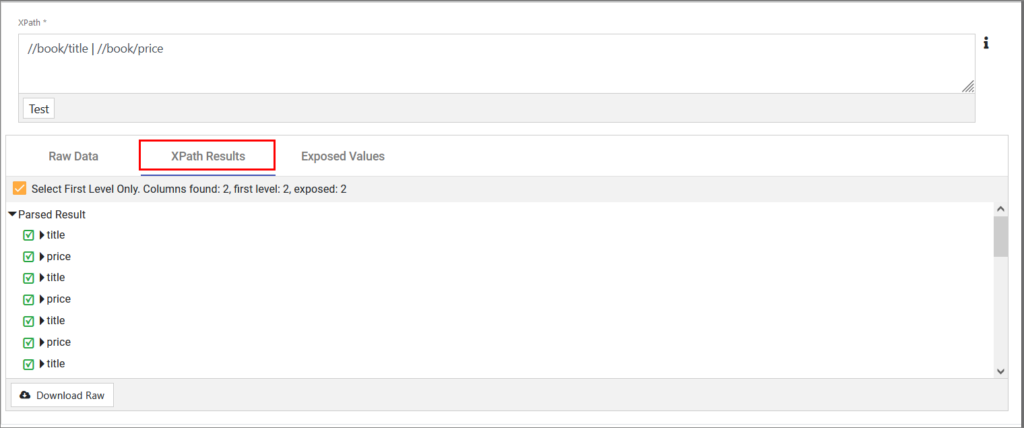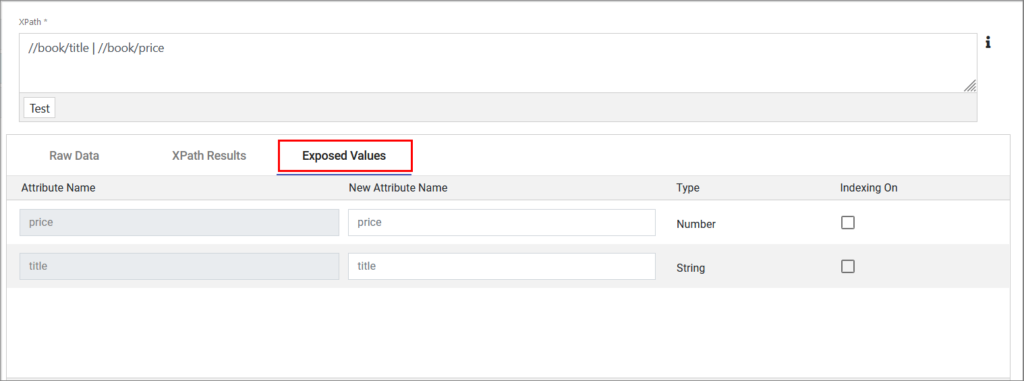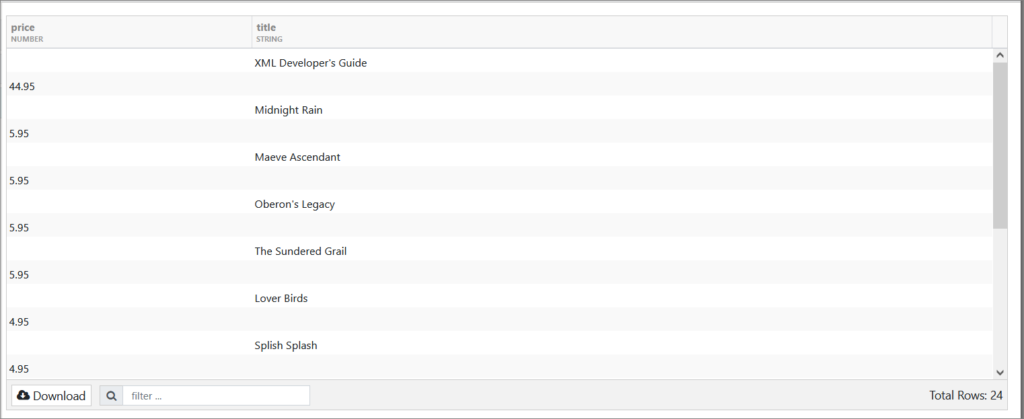An XML XPath Feed will parse XML data and bring in a tabular dataset. The feed will be designated as an XML XPath feed in the data pipeline as seen in the following screenshot.

Configuring XML XPath Feed
Step 1: Create a Connection
Perform the following steps to connect to a data directory on the local server:
- Click
 .
.
The Connections page is displayed. - Click + in the lower-left corner to create a new connection.
A pop-up for choosing a connection type is displayed. - In the pop-up, select File / Server Filesystem connection type.
- Click Use Selected.
A new page is displayed. - In Connection Name, enter a name for the connection.
- Make sure the Enable Connection toggle is on.
- In Server Path, provide a relative path from the installation folder of edgeCore.
- Click Next.
You are taken to the Test Connection tab where the confirmation message Connection test was successful is displayed. - Click Save and Close.
The newly created connection is displayed in the list of Connections.
Step 2: Create an XML XPath Feed
Now that you have established a connection to a directory of files, you can create a Feed from a specific XML file and select data elements using an XPath expression.
Perform the following steps to create a Feed from a specific XML data file:
- Click
 .
.
The connection you created is displayed in the Pipeline. - Click the gear icon button in the connection box and select + .
A pop-up for choosing a Feed Type is displayed. - In the pop-up, select XML XPath.
A new page is displayed. - On the Base Configuration tab, do the following:
a) In Feed Name, enter a name for the feed.
b) (Optional) Provide a description.
c) In File Name, select the .xml file. In order for the XML file to appear in this dropdown, it needs to be located in the data folder of the edgeCore build.
d) Enable or disable the Preserve Data Types toggle switch. If enabled, data types defined in the data source will be preserved. If disabled, all values will be interpreted as strings.
e) (Optional) Enable the Advanced Update Scheduling toggle switch if you want to define an advanced schedule for updates.
f) In Poll Interval, specify how often you can access the data for a feed and also how often the data changes (in seconds). If a server subscription is active (another user is using that node or a server job is making it active), the current data retrieved will be returned. It will not refresh until all server-side subscriptions are closed and a new one is open. If you set the poll interval to 0, that means the data is very static, and you do not expect it to change.
g) (Optional) Turn on the Enable Server Subscription toggle switch in order for data for this feed to be continually fetched, updated, and cached based on the Poll Interval. If enabled, the server will subscribe to the feed, just as a client widget would. This means that the data and any resources that would otherwise be allocated “on-demand” for the first user to view a Visualization that leverages the data produced by this feed are allocated when the server is started and maintained as long as this feed is configured.
h) (Optional) Enable the Persist toggle switch to use persistent table store.
i) (Optional) Enable the Publish Dataset via REST API toggle switch to allow other edgeCore servers or third-party software to connect to this server’s pipeline.
j) Click Next. You are taken to the XML XPath Parser tab. - The XML XPath Parser tab consists of the following fields:
a) XPath: uses XPath syntax to select portions of the XML Document. For instructions on the XPath syntax, refer to this page.
b) Raw Data: shows what the raw XML data looks like inside the source XML file. Use this tab as a reference when writing the XPath selector.
c) XPath Results: shows the resulting XML data after parsing it with the supplied XPath syntax. To update, click Test in the XPath field, then toggle back and forth between Raw Data and Results to validate your XPath syntax. Also, here you need to define one or more exposed values by selecting the checkbox next to them.

d) Exposed Values: shows a list of all discovered attributes from the XPath Results. Any attributes in this list will be used in converting the data to a tabular format.

e) Download Raw: enables you to save a copy of the raw data as an XML file. The file will be downloaded directly to the local machine, similar to any other file that one would download from the browser.
f) Click Next.
You are taken to Tabular Data Preview where you can observe the data preview of your XML XPath Feed.

- Click Save and Close.
The newly created feed is displayed in the Pipeline.
Uploading XML Files through the User Interface
edgeCore version: 4.3.7
To upload XML files to feeds without having to access the server, click + next to File Name.
Make sure the file extension matches the feed type (in this case, the extension needs to be .xml).
Once you upload the XML file, you can select it from the File Name dropdown.
